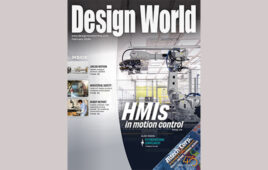Maintaining a sense of positivity — 8 takeaways from Alan Beaulieu’s economic discussion
First off , I hope that you are staying healthy and sane in these challenging times. What we’re all going through is difficult for all of us, to varying degrees, based on our jobs, our financial situation, our health, and more.
I’d like to off er some positive news in the midst of the dire outlook that’s been the regular diet of late on news stations. On April 15th, we asked renowned economist Alan Beaulieu of ITR Economics to provide us with a 90-minute webinar looking at what the COVID-19 crisis realistically means for the economy over the next few months and years. I’ve heard Alan speak many times over the past few decades at industry events like the NFPA and PTDA conferences, and he’s always a voice of reason and logic.
Beaulieu’s message was one of relative optimism, that the U.S. industrial economy will rebound relatively quickly, even assuming that most of the country remains in stay-at-home mode through June, which is currently longer than state governments are anticipating. He expects a volatile recovery, with the U.S. GDP reaching a bottom in June 2020, but then a peak in June 2021 that will be slightly higher than the last peak. Beaulieu said that most leading macroeconomic indicators are still positive and in rise mode — that economic recovery is likely in the foreseeable future, and “we will be at record high levels in the economy here in the U.S. before too, too long.”
Here are some more takeaways from his presentation:
• On the Cares Act of 2020: The Paycheck Protection Program money is getting out there. The politicians approached the target economy in a very reasonable fashion, providing for some really inexpensive loans, large amounts of which will be forgiven, as well as money to individuals so that they can continue to move forward. In the 2008-9 stimulus, it came out piecemeal — politicians dragged it out. For this iteration, a record setting $2 trillion is being spent, something we will be talking about for a very long time. Even if you were to think about inflation and growth in the economy, this is a mammoth amount of money coming into the economy to the rescue, and it will help. It will do good things.
• We’re going to be facing a pretty tight labor market in the future. For right now, manufacturers should try to keep the best and easily trainable, people. The unemployment rate is not going to go to double digits, according to the ITR forecast. It will be above the traditional full employment and it will be quite a bit above what we have grown accustomed to in this country, but it is not going to be the dire numbers that you’ve been hearing as we go forward.
• The rate of growth and GDP has been slowing down since the middle of 2018; most people didn’t even recognize that was happening. Now, it is falling off a cliff , it will be painful. It’s going to go way too low in June 2020 at approximately minus 2.4% — and then it is going to move up. The top will come in June 2021 at a peak of 3.6%. ITR is saying the economy is going to go from a contraction at 2.4% and then four quarters later, it’s drawing at 3.6%. People will benefit from that and feel good about that.
• Pre-COVID, it was expected that there would be a recession in 2022- 2023. That has now been removed from the forecast; the GDP line has the economy slowing down from June 2021 onward into late 2022. But it won’t be a recession because it never reaches a zero line, which represents 0% growth.
• Look for firms that have been sourcing from overseas to be ready to switch back to the U.S. ITR thinks that’s one of the things that will happen as a result of the crisis — that there will be a resurgence in “near-sourcing,” not necessarily only in the U.S. but in Canada and Mexico, as well.
• On the stock market, ITR looked at 11 precedents. The market went to rebound in anywhere from 11 to 26 months. When the market bounces back, it tends to rebound in those 11 to 26 months, from 56.5% to 85.5%. Given that the market is off (as of 3/23) 33% from the February 2020 high, if we come back 56.5%, we are made whole. If we can go back to the high side, 85.5%, we’re making some money in a year or two. Beaulieu said that if you want it in a couple months, it’s not likely to happen. “But if you have some patience, you’re going to be all right. Your retirement is not likely to be ruined unless you’re retiring tomorrow.”
• If you’re sourcing from China, they’re waiting for your order. Their problem now is that they’re waiting for orders from the U.S. and the E.U. and they need raw materials from the E.U. and from the U.S. The demand that they have and the demand that they’re waiting for from us are hurting or slowing the process down now. They have their own internal pent-up demand, but a consumer demand is not nearly as large in China as it is in U.S.
• Companies need to focus on marketing now, as far as keeping their name out there. He said product and name recognition has to go on, or else when the crisis is over, they’re going to be forgotten. “I firmly believe that some level of marketing has to go on and now’s a good time to be designing products for the future. As you’re designing products for the future, marketing has to be on your team.
Paul J. Heney – VP, Editorial Director
[email protected]
On Twitter @wtwh_paulheney
Filed Under: DIGITAL ISSUES • DESIGN WORLD




